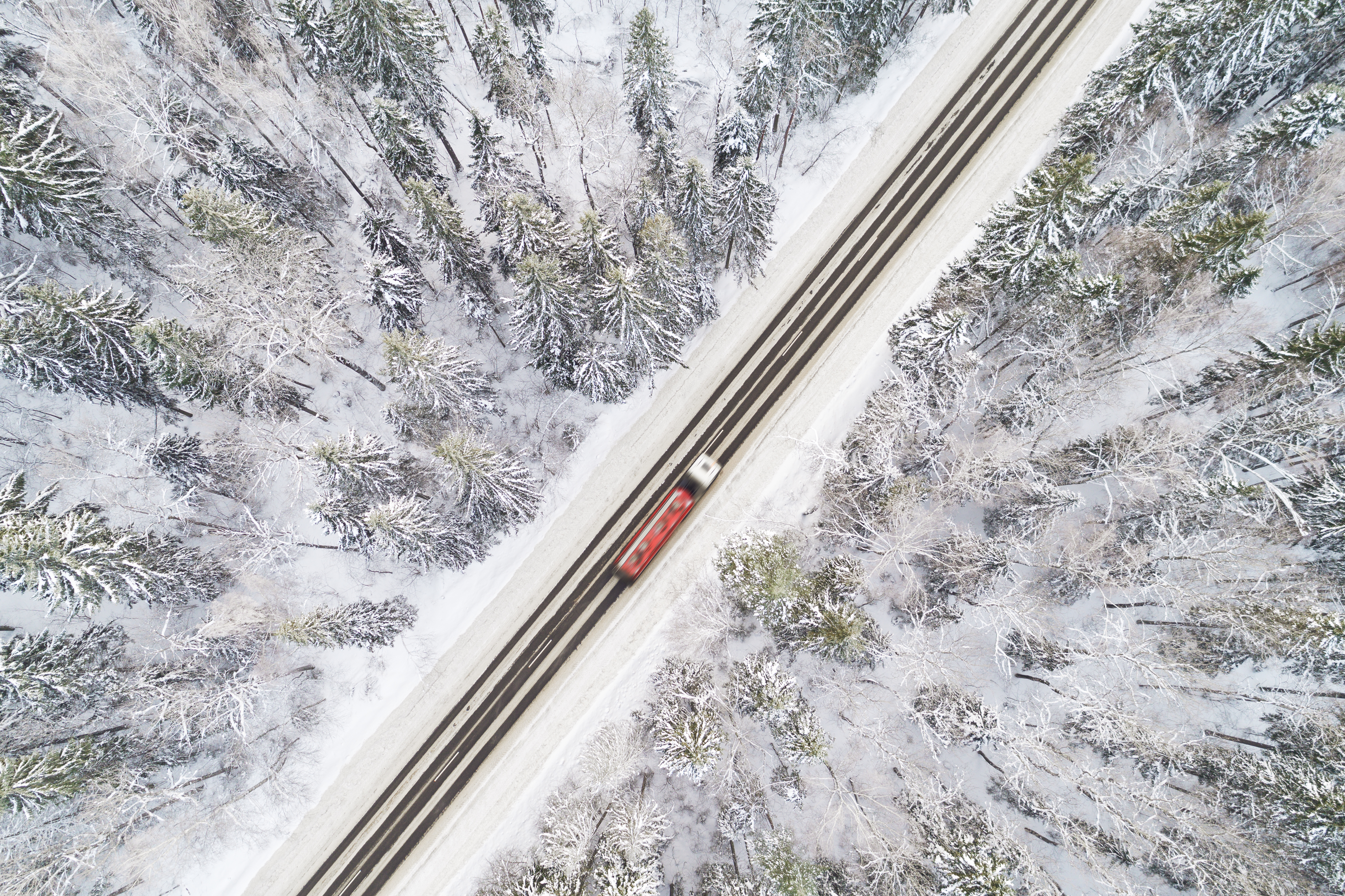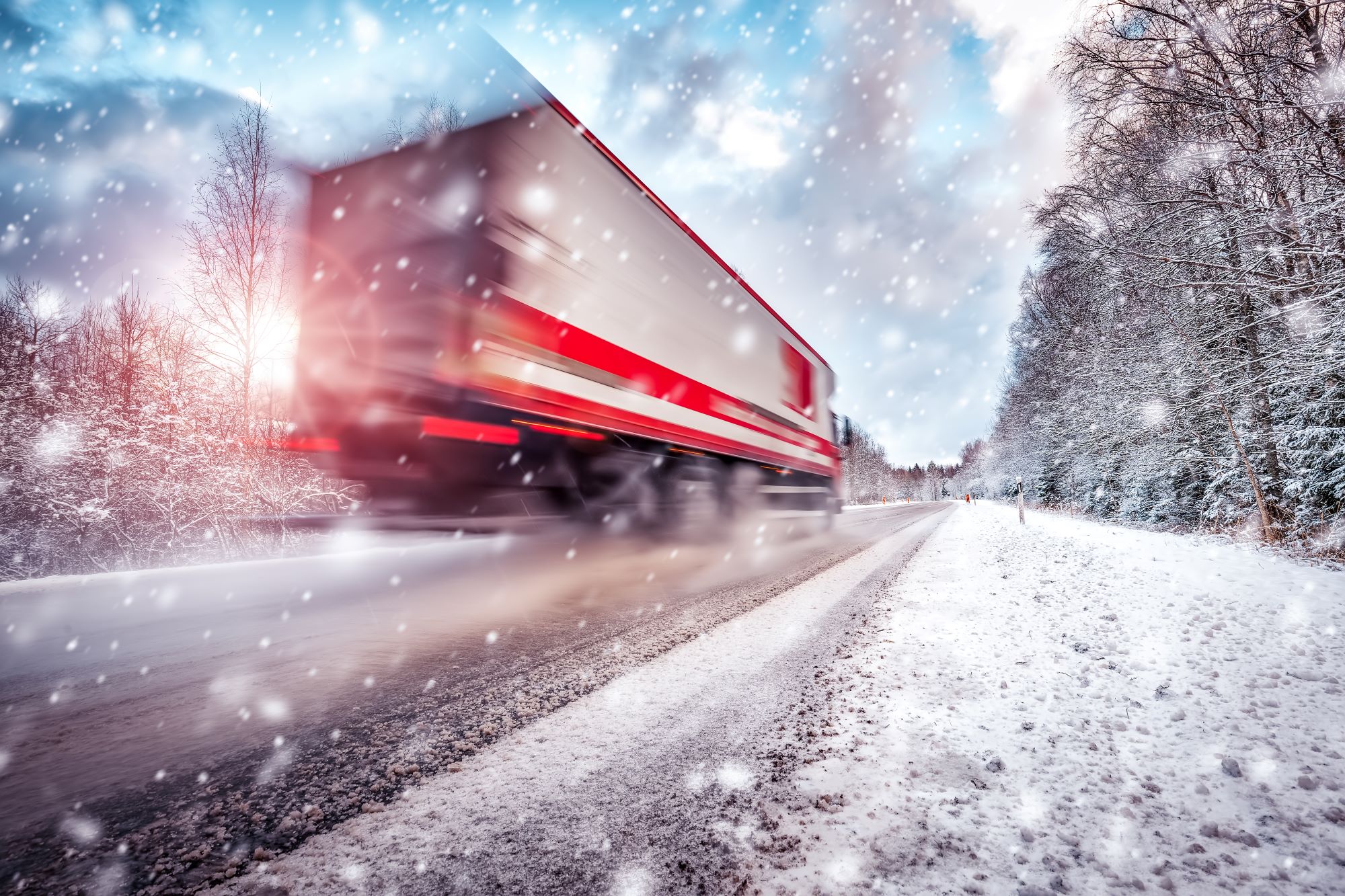
Miranda Blake
Посібник водія вантажівки про зиму в Європі
Створено: 16.10.2024
•
Оновлено: 04.01.2026
У холодну пору року водії вантажівок стикаються з унікальним набором викликів та обов'язків. Збільшується кількість серйозних дорожньо-транспортних пригод, причому [33% страхових відшкодувань, отриманих у цей час, вважаються серйозними] (https://atha.co.uk/news/why-you-are-more-likely-to-have-a-severe-road-traffic-accident-in-the-winter).
Тому підготовка має вирішальне значення. У цій статті ми розповімо, як водії вантажівок можуть убезпечити себе як на дорозі, так і в кабіні цієї зими.
Навігація в штормових умовах
Важливо їхати повільно і дотримуватися безпечної дистанції від інших транспортних засобів, особливо на затоплених територіях. Ви повинні поставити вантажівку на низьку передачу і тримати двигун на повних обертах.
Наступні поради також допоможуть вам керувати автомобілем у штормову погоду.
- Якщо ви втратили керування на поверхневій воді, сповільніть рух, відпустивши ногу з педалі акселератора - не намагайтеся різко гальмувати або повертати кермо.
- Високі автомобілі більш вразливі до сильного вітру - переконайтеся, що ви міцно тримаєте кермо, і уникайте мостів, де це можливо.
- Якщо ваша вантажівка порожня, подорожуйте з відкритими шторками. Таким чином, вітер менше зачіпатиме вас.
Управління снігом та льодом
Під час ожеледиці та снігопаду слід зменшити швидкість і дотримуватися необхідної дистанції до транспортного засобу, що рухається попереду. Насправді, рекомендується збільшити гальмівний шлях у 10 разів порівняно з нормальним - однак, на практиці це важко оцінити. Дослідження компанії Admiral показало, що [ожеледиця спричиняє 10% аварій взимку] (https://atha.co.uk/news/why-you-are-more-likely-to-have-a-severe-road-traffic-accident-in-the-winter). Ви можете визначити, чи їдете ви по ожеледиці, якщо дорога виглядає мокрою, але немає бризок від інших транспортних засобів.
Серед інших порад, які допоможуть вам керувати вантажівкою в сніг, - регулярний техогляд вантажівки та наявність усього необхідного обладнання перед поїздкою, наприклад, тросів для стрибків та інструментів для боротьби з ожеледицею. Крім того, завжди пам'ятайте, на якій передачі ви повинні бути, оскільки це може врятувати вас від втрати контролю над вантажівкою. На рівних поверхнях їдьте на найвищій передачі. На спусках використовуйте гальмо двигуна і рухайтеся на низьких передачах. Щоб уникнути пробуксовування коліс, при рушанні з місця використовуйте вищу передачу - це забезпечить необхідне зчеплення з дорогою для переміщення автомобіля.

Забезпечення видимості
На небезпечних автомагістралях та зовнішніх факторах, що негативно впливають на зір та спричиняють аварії вантажівок, видимість має вирішальне значення за будь-якої погоди, особливо коли стає прохолодніше. Тому обов'язково перевіряйте лобове скло на наявність сколів або тріщин, оскільки в холодні місяці вони можуть поширюватися швидше.
Крім того, вам потрібен максимальний рівень видимості фар, номерного знаку та лобового скла. Окрім очищення від снігу та бруду, варто регулярно мити автомобіль, щоб уникнути накопичення дорожньої солі (вона викликає корозію).
Якщо видимість погана, а умови стають вкрай непередбачуваними, краще зійти з дороги і відпочити на найближчій стоянці для вантажівок. Якщо вам все ж таки доведеться перевищити [години водіння] (https://snapacc.com/newsroom/discover-the-new-drivers-hours-rules/), ви можете скористатися спеціальним дозволом для водіїв, які застрягли в унікальних обставинах, таких як екстремальні погодні явища.
Оцінка глибини протектора шини
Низькі температури також можуть вплинути на функціональність ваших шин, оскільки вони можуть спричинити зниження тиску повітря. А зношені шини, на жаль, збільшують гальмівний шлях і знижують рівень стійкості на мокрих і зледенілих дорогах, а низький протектор призводить до ковзання.
Як наслідок, варто перевіряти глибину протектора перед кожною поїздкою в штормових та інших суворих умовах - так ви будете знати, коли потрібно вирішувати будь-які проблеми, що виникають.
Дотримуйтесь правил експлуатації зимових шин
Важливо також знати про різні вимоги до зимових шин. Деякі країни зобов'язують водіїв мати при собі мішки з піском та лопати, в той час як в інших обов'язковими є ланцюги протиковзання. Компанія Continental підготувала простий [посібник з вимог до зимових шин] (https://www.continental-tyres.co.uk/b2c/tyre-knowledge/winter-tyre-laws/) для Великої Британії та Європи.
З 1 листопада використання зимових шин є обов'язковим:
- Австрія
- Чехія
- Фінляндія
- Франція
- Литва
- Сербія
В інших країнах вони є обов'язковими наприкінці місяця або в грудні, або залежать від погодних умов. Що стосується шипованих шин, хоча вони дозволені в перерахованих нижче країнах, існують суворі правила щодо них. Найкраще перевірити правила кожної країни перед поїздкою.
- Австрія
- Білорусь
- Данія
- Естонія
- Фінляндія
- Франція
- Великобританія
- Латвія
- Ліхтенштейн
- Литва
- Норвегія
- Іспанія
- Швеція
- Швейцарія
- Туреччина
- Україна
Привозимо відповідні витратні матеріали
Вам також потрібно подумати про те, як ви зможете подбати про себе взимку. Це може здатися очевидним, але переконайтеся, що у вас є доступ до достатньої кількості їжі та пиття. У холодну пору року зростає ймовірність перекриття доріг, і ви не завжди зможете дістатися до стоянки для вантажівок. Заздалегідь приготуйте закуски або їжу, а також, в ідеалі, гарячий напій у флязі.
Особливо, якщо ви не маєте доступу до місця для відпочинку, подбайте про те, щоб зігрітися. Наприклад, візьміть із собою акумуляторні грілки. Крім того, завжди майте під рукою теплий і запасний одяг; це буде особливо корисно, якщо одяг замерзне і намокне під час виконання таких завдань, як прибирання снігу з лобового скла.
В ідеалі, у вас має бути набір для виживання взимку, що складається з їжі, напоїв, портативного зарядного пристрою для телефону, ліхтаря, ковдр, захисного жилета, лопати та міцного взуття для прогулянок.
Забезпечити доступ до зупинок для відпочинку з автотранспортом
Хоча ви не можете контролювати погоду, ви можете захистити себе та інших на дорозі. Це означає, що ви повинні якнайшвидше знайти надійне та безпечне місце для паркування. Наш бортовий додаток або [сторінка з картами] (https://snapacc.com/map/) покаже вам найближчих постачальників послуг, а також інформацію про можливості, які вони пропонують.
Ви можете завантажити мобільний додаток вже сьогодні, натиснувши [це посилання] (https://intruckapp.com/download/).



